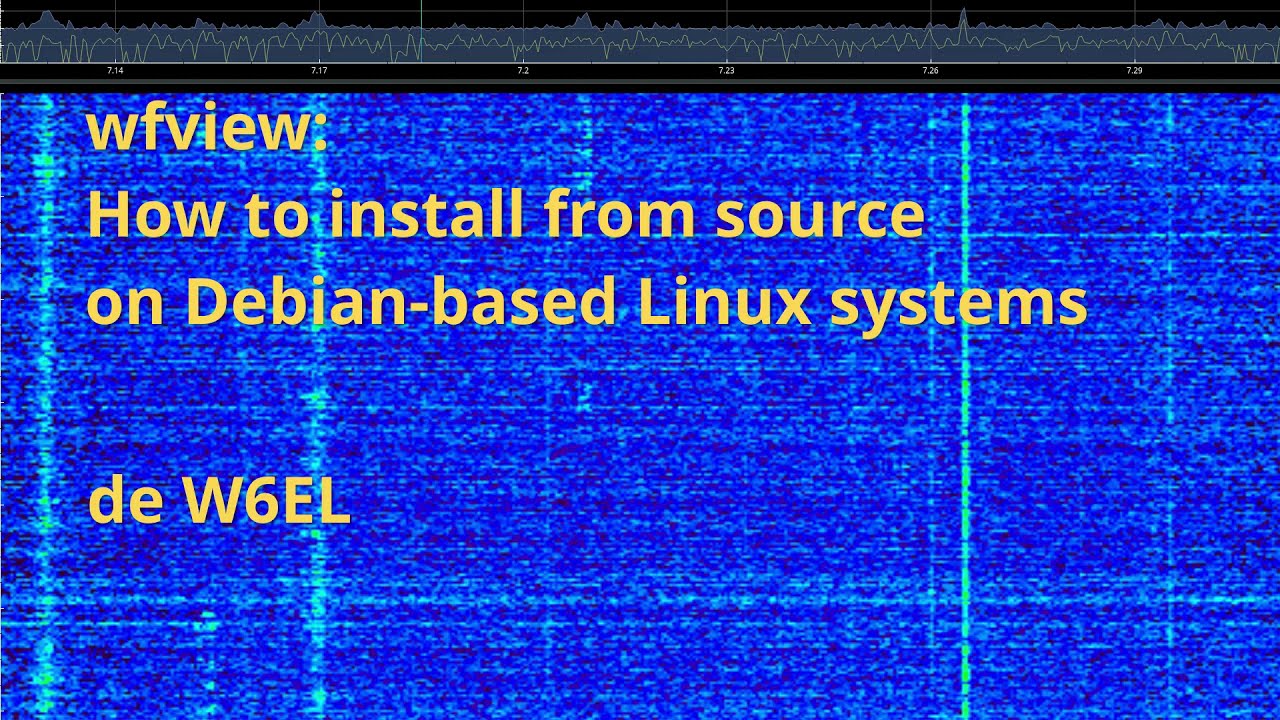Hello, I would like to use a Raspberry 4 with 4GB of RAM as a server on my IC-7300. Which Raspian or which operating system should I use. I’ve tried everything but I can’t get WFVIEW installed. Needed urgent help for a beginner. I apologize for my bad english 73 de DL6WO
Hi Wolfgang,
A Raspberry Pi with 4 GB RAM should be good. Use “Raspberry Pi OS” (previously known as “Raspbian”). It is just a special version of Debian Linux.
Once you have it installed, this video shows the process of installing wfview onto linux, and it will work on a Raspberry Pi too:
Let us k now if it works or if you run into trouble.
–E
de W6EL
Hello and thanks for the quick help. The installation went right away and the connection between Raspberry and Win-PC worked immediately. I just get no audio and don’t know which sound card I have to select for the Raspberry. If I use 2 Win-PCs, the audio works without any problems, so it is due to the Raspberry settings. 73 de DL6WO Wolfgang
Hi Wolfgang,
What are you trying to do with the audio? Are you wishing to access the radio remotely with the wfview server?
Glad it’s working overall,
—E
de W6EL
Yes, I would like to access the 7300 with the Win-10 PC server via my network. The IC-7300 is connected to the Raspberry via a USB cable. Everything is transmitted except for the audio, unfortunately. It is due to the settings on the Raspberry because I replace it with a Win-PC, everything works
73 de DL6WO Wolfgang
Check the log on the server. See what audio device it is actually using.
Hello Wolfgang
I’m using the same setup as you describe since over half a year to communicate with my remote sited rig.
I have a Raspberry pi 4 by the rig connected with a USB cable and a Win10 at home and it works perfectly.
I use HamPI which is a preinstalled distribution for the Raspberry pi.
What version of WFView are you using? I think I have seen people having difficultes with audio with the latest release 1.50. I might be wrong here but worth looking up.
I run version 1.2e both at home and at the remote site.
I’ll show you my settings that work for me.
On the remote Raspberry server side:
On the local Win10 client side:
I hope this might help you.
By the way, I had to use 1ch16bit for my TX audio or it would sound like crap.
EDIT: I would suggest you first try to make you Raspberry pi work in local mode to make sure the audio settings work before seting up the remote connection. That way you will know the audio connection between the Rpi works and only need to debug the remote connection.
Hello Bjorn
Yes use the latest software for the Raspberry and wfview 1.5 on the Raspi and also on the WIN-10 computer. I reinstalled it today but still the same, no audio on the Win10 computer. If I replace the Raspberry with a Win computer, it works. What kind of software are you using on the Raspberry. I don’t know HamPi maybe you have a link for me.
73 de DL6WO Wolfgang
Folks,
If you do not have audio, please check the program’s log (just press the “Log” button) to see what messages say about “audio”. Specifically what device(s) are being selected. You may also want to try another audio system. On my Linux system, I use Port Audio with great success. QT audio works well on some of my systems, but Port Audio seems to always work.
There were some recent changes to device name resolution under the hood, which were intended mostly to address issues on the Windows platform, but it could have some effects on Linux.
–E
de W6EL
I run WFView just like you but installed automtically with the disk image called HamPi.
HamPi is an image file to install standard Raspbian OS on a flash memory but packed with HAM programs preinstalled. Among all programs are also wfview. I dont know what version nowadays though. On my HamPi image was 1.2e and as it works I don’t dare to upgrade.


